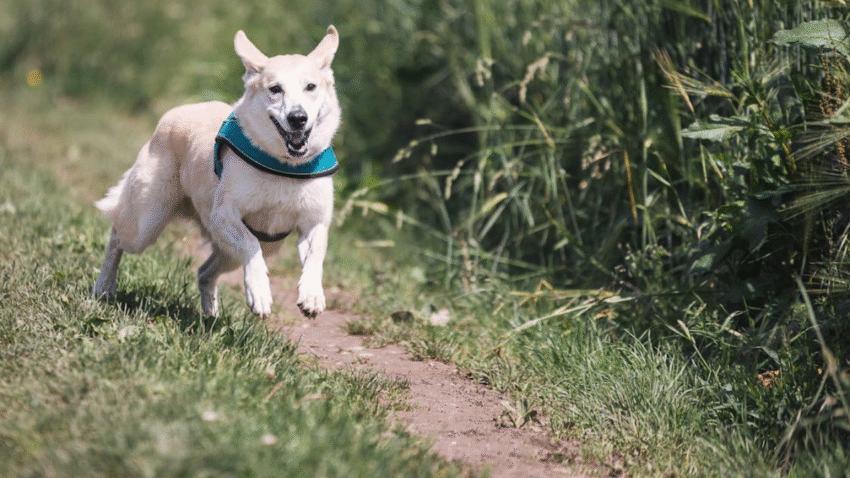Introduction
Ever wondered whether you should feed your dog right after a walk or play session? Learning how to feed your dog after exercise or walks can make a big difference in digestion, energy recovery, and overall health. In this guide, we’ll walk you through the do’s and don’ts of post-activity feeding so your pup stays happy, healthy, and energized.
Why Post-Exercise Feeding Matters for Dogs
Exercise is essential for your dog’s physical and mental health, but what comes after is just as important. Feeding your dog too soon—or too late—after activity can lead to digestive problems or missed recovery benefits.
Here’s why proper timing and nutrition matter:
- Supports muscle recovery after play or training
- Replenishes lost energy
- Helps avoid issues like bloat or vomiting
- Maintains consistent feeding routines
- Reduces fatigue and improves mood
Dogs, like humans, need balance after exertion. Whether it’s a high-energy fetch session or a long walk, smart feeding habits keep your dog thriving.
Step-by-Step Guide to Feeding Your Dog After Exercise
1. Wait 30–60 Minutes Before Feeding
Never feed your dog immediately after intense exercise. Running or playing hard can raise body temperature and heart rate. If they eat too soon, they risk digestive upset or worse—gastric dilatation-volvulus (bloat), especially in large breeds.
Recommended waiting time:
- Light walk: Wait 20–30 minutes
- Moderate exercise: Wait 30–45 minutes
- Intense activity: Wait 45–60 minutes
Let your dog cool down, relax, and breathe normally before offering food.
2. Offer Water First (In Moderation)
Hydration is key after any form of activity, but don’t let your dog gulp down a full bowl in seconds. Instead:
- Offer small amounts of room-temperature water
- Let them drink in short intervals over 15–30 minutes
- Avoid ice-cold water which can shock their system
You can also use ice cubes as a slow hydration tool, especially on hot days.
3. Feed a Balanced Meal or a Light Snack
Once your dog has cooled down and hydrated, you can feed them:
- A regular meal if it aligns with their feeding schedule
- A light protein-rich snack if mealtime is later (e.g., boiled chicken or a few training treats)
Focus on a mix of:
- High-quality protein (chicken, beef, salmon)
- Easily digestible carbs (sweet potato, rice)
- Healthy fats (fish oil, flaxseed)
This helps rebuild energy and supports muscle recovery.
4. Watch for Signs of Overexertion
If your dog is panting heavily, drooling, or appears disoriented, delay feeding and offer cool water. These are signs they need more rest and hydration before digesting food.
If symptoms don’t improve, contact your vet.
5. Stick to a Consistent Feeding Routine
Dogs thrive on routine. If your daily walk or exercise happens before a meal, continue that structure. Feeding at unpredictable times can confuse their system and affect digestion or behavior.
Try to:
- Feed around the same time each day
- Align meals with walk/exercise time
- Avoid feeding right before or after vigorous activity
Common Mistakes to Avoid
1. Feeding Immediately After Exercise
Feeding too soon can cause indigestion, vomiting, or in some breeds, bloat—a serious condition where the stomach twists and fills with gas.
2. Letting Dogs Guzzle Water
Large amounts of water post-exercise can trigger vomiting or even dilute essential nutrients. Use small portions spaced out instead.
3. Overfeeding Post-Walk
Some owners give their dog extra food assuming they “earned it.” But unless it was a very intense workout, your dog likely doesn’t need more calories than usual.
4. Feeding Before Exercise
Feeding a full meal right before a walk or run can also cause digestive distress or sluggishness. Always wait 1–2 hours after eating before heavy activity.
5. Ignoring Signs of Exhaustion
Feeding a dog that’s still panting or overheating can stress their system. Make sure they’re calm before eating.
Extra Tips & Recommendations
Tip 1: Use High-Protein Snacks After Training
If your walk included training drills, a few protein-rich treats (like jerky or boiled chicken) can reinforce good behavior and support recovery.
Tip 2: Keep Treats or Meals Lightweight
Use lean, simple ingredients after walks to avoid digestive overload. Avoid anything heavy like fatty meats or rich gravies post-exercise.
Tip 3: Observe Breed-Specific Needs
Deep-chested breeds (Great Danes, Boxers, German Shepherds) are more prone to bloat. Be extra cautious with feeding times and avoid rough play after meals.
Conclusion
Feeding your dog after exercise or walks requires more than just filling their bowl—it’s about timing, hydration, and choosing the right foods to support their recovery. Let them cool down, offer water slowly, and feed wisely for a healthy, balanced routine that supports energy and longevity.
🐾 Bookmark us for more expert dog care and feeding tips!
